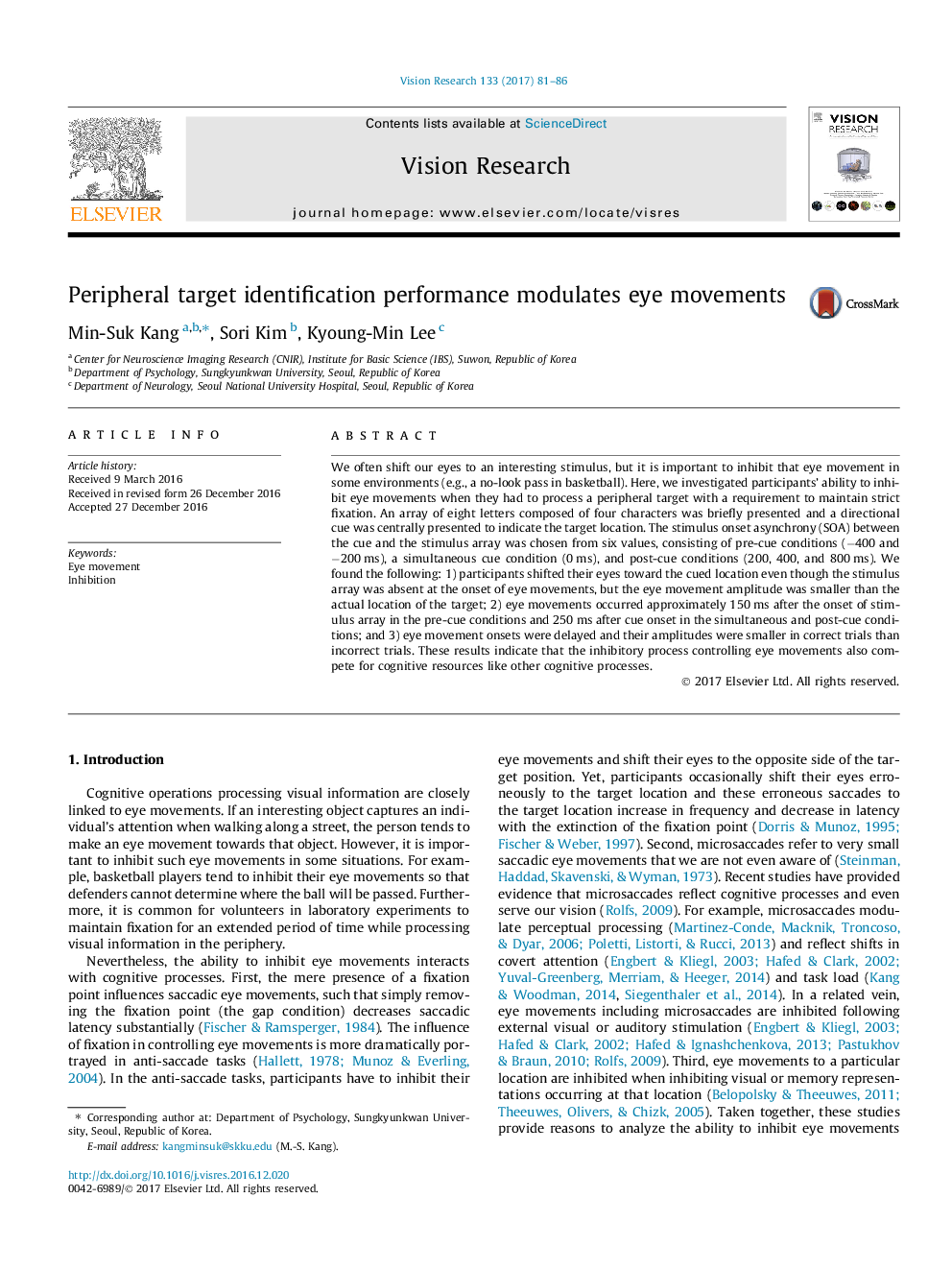| Article ID | Journal | Published Year | Pages | File Type |
|---|---|---|---|---|
| 5705891 | Vision Research | 2017 | 6 Pages |
Abstract
We often shift our eyes to an interesting stimulus, but it is important to inhibit that eye movement in some environments (e.g., a no-look pass in basketball). Here, we investigated participants' ability to inhibit eye movements when they had to process a peripheral target with a requirement to maintain strict fixation. An array of eight letters composed of four characters was briefly presented and a directional cue was centrally presented to indicate the target location. The stimulus onset asynchrony (SOA) between the cue and the stimulus array was chosen from six values, consisting of pre-cue conditions (â400 and â200Â ms), a simultaneous cue condition (0Â ms), and post-cue conditions (200, 400, and 800Â ms). We found the following: 1) participants shifted their eyes toward the cued location even though the stimulus array was absent at the onset of eye movements, but the eye movement amplitude was smaller than the actual location of the target; 2) eye movements occurred approximately 150Â ms after the onset of stimulus array in the pre-cue conditions and 250Â ms after cue onset in the simultaneous and post-cue conditions; and 3) eye movement onsets were delayed and their amplitudes were smaller in correct trials than incorrect trials. These results indicate that the inhibitory process controlling eye movements also compete for cognitive resources like other cognitive processes.
Keywords
Related Topics
Life Sciences
Neuroscience
Sensory Systems
Authors
Min-Suk Kang, Sori Kim, Kyoung-Min Lee,
